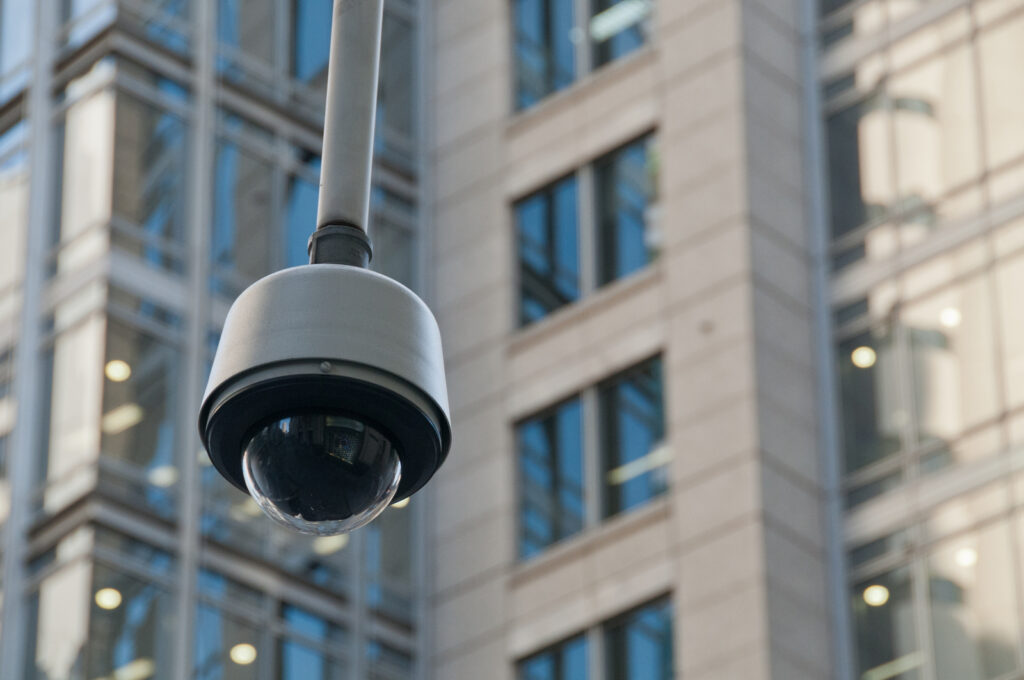Security is a vital part of everyday life. It prevents criminals from accessing resources, keeps our information safe, and assures us that we are well-protected against attacks or intrusions. With this in mind, it is important to understand what types of security exist and how they can be leveraged for optimal protection. This article will explore five categories of security measures and discuss their advantages over traditional methods.
The first type of security measure discussed will focus on physical security solutions such as locks, guards, alarms and access control systems. These solutions serve to protect people and assets by restricting access to facilities or areas while providing a visible deterrent to potential attackers. The second category examines cyber security, including firewalls, antivirus software, intrusion detection systems (IDS) and other digital defences designed to prevent unauthorized access to networks or data stores.
Finally, the third through fifth types of security explored will include procedural/operational security, personnel security and informational/data security. Each offers distinct benefits when properly implemented within an organization’s infrastructure; however each must be tailored specifically for its environment in order to offer maximum effectiveness. Through exploring these various aspects of security measures, one can gain insight into how best to secure their property and safeguard valuable resources from those seeking to exploit them without authorization.
Definition Of Security
Security is a broad term encompassing many aspects of safety and protection. Generally, security can be defined as the state of being free from danger or threat. It is important to note that security does not necessarily mean freedom from all harm; rather, it involves taking measures to reduce risk and mitigate potential threats. This concept applies across multiple disciplines, such as information security, cyber security, physical security, and endpoint security.
Information security is focused on protecting data from unauthorized access or manipulation. Cybersecurity involves strategies for preventing malicious software (malware) attacks and network intrusions through secure networks and systems configuration. Physical security focuses on controlling who has access to premises via locks, guards, gates, cameras etc.. In contrast, endpoint security concerns itself with the integrity of endpoints such as computers, tablets etc. All of these types of security have one thing in common: they work together to provide an overall sense of safety and assurance that assets are protected against any possible risks or threats.
Access Control
Access control is the practice of ensuring that only authorized people have access to certain resources. It is typically implemented through an access control system, which regulates and monitors user authentication, authorization protocols, and security policies. This includes identity management systems such as biometrics (fingerprint scanning), token-based authentication (smart cards or USB keys), and other mechanisms for verifying a user’s identity before granting them access. Access control also involves implementing various levels of privilege so that users are limited in what they can do: from simply reading content on a website to managing sensitive information held within corporate databases.
Organizations should create well-defined processes around their access control systems; this might include monitoring who has access to different areas of the organization, setting up layers of permission based on roles and responsibilities, establishing audit trails to track changes made by particular users, and developing effective methods for revoking credentials when necessary. In addition to physical access controls like locks and keypads, organizations should consider implementing logical controls such as two-factor authentication or multi-factor authentication in order to further secure their networked systems against malicious actors.
TIP: When creating your organization’s access control system, make sure you clearly define all security measures involved, including how often passwords must be changed and under what circumstances privileges may be granted or revoked. Defining these rules ahead of time will help ensure that all employees understand their roles in protecting confidential data and keeping it safe from unauthorized use.
Network Security
Network security is a critical component of an organization’s overall security strategy. It involves protecting the network infrastructure, including routers, switches, firewalls and other devices, from unauthorized access or malicious attacks. Security protocols such as data encryption can be used to ensure that confidential information remains secure when transmitted over public networks. Organizations should also use intrusion detection systems (IDS) to monitor for suspicious activity on their networks and vulnerability scanning to identify any weak spots in their defences.
Beyond implementing robust technical controls, organizations need to consider developing strong policies around the acceptable network use, user authentication standards, patch management procedures, and incident response plans. This way, they can protect valuable assets while ensuring users have safe access to appropriate resources. Additionally, organizations may employ ethical hackers tasked with testing the network against potential threats so weaknesses can be identified before malicious actors exploit them.
Application Security
Application security is a branch of network security specifically focused on protecting applications and the data they process. It involves ensuring that only legitimate users with valid credentials can access an application and granting them appropriate authorization to perform certain tasks within it. Organizations should implement strong authentication methods such as multi-factor identification when verifying user identity in order to prevent unauthorized access. Additionally, programs should be designed with built-in protections from common threats like SQL injection and cross-site scripting attacks.
To supplement these measures, organizations may choose to deploy an application firewall that acts as a gatekeeper between internal systems and public networks. This provides another layer of defense by monitoring data traffic for potential malicious activity before allowing it through. In addition, organizations must establish secure coding practices so that developers build their applications using best practices that reduce vulnerabilities over time. By taking all these steps, organizations can ensure their applications remain secure against cyber attacks while still providing users with safe access to the resources they need.
Data Loss Prevention
Data Loss Prevention (DLP) is critical to any successful security strategy. It helps organizations protect their sensitive data from unauthorized access and malicious attacks by monitoring, detecting, and preventing the loss or leakage of confidential information. DLP can be implemented through a variety of methods, such as endpoint protection, network-level detection, and encryption-based solutions to safeguard data at rest and in transit. This ensures that only authorized users have access to sensitive information while also protecting against potential security breaches caused by human error.
Organizations must consider all aspects of DLP when creating their overall security policy. This includes implementing policies for identifying protected data, setting up proper authentication protocols for granting user access, ensuring data is encrypted both at rest and in transit, conducting regular audits to check for compliance with regulations, training personnel on best practices for handling confidential information, and using appropriate technologies such as firewalls to monitor network traffic. All these measures help prevent accidental or intentional loss of data due to internal or external threats.
TIP: Organizations should also review their existing infrastructure regularly to identify areas where they may need additional protections against possible information leakage or other security vulnerabilities. By taking proactive steps like these, businesses can ensure they are adequately prepared against the ever-evolving threat landscape and minimize the risk of damaging security breaches.
Disaster Recovery
Disaster recovery is an essential element of any security strategy. It involves the processes and procedures used to protect IT systems, applications, and data in the event of a disruption or disaster. Business continuity planning (BCP) helps organizations create a resilient environment that can quickly recover from outages or disasters while minimizing downtime and financial losses. A clear plan for responding to incidents and mitigating their effects is vital for ensuring ongoing operations.
Cloud backup services are also important when it comes to disaster recovery. They allow businesses to store critical information on remote servers with built-in redundancy and encryption capabilities, making them more secure than traditional backups stored on physical hardware devices. Cloud backups provide additional protection against ransomware attacks by enabling quick restoration of encrypted files without having to pay the ransom fee demanded by attackers. Additionally, using cloud services can help improve operational efficiency as they enable real-time access to data from anywhere in the world via an internet connection.
In addition to these strategies, organizations should also develop an incident response plan that outlines steps for responding promptly and effectively when faced with an unexpected emergency. This includes creating a list of contacts who will be informed whenever there’s an issue as well as establishing protocols for communication between stakeholders during such events. Organizations may also want to invest in advanced data recoveries solutions such as RAID arrays which can help restore lost data faster if the primary storage system fails due to natural disasters or other unforeseen circumstances.
Conclusion
Security is an important element of any organization or individual. It can be defined as the protection from unauthorized access, misuse, destruction and/or modification of data or systems. Security involves a range of measures designed to protect against internal and external threats. These include Access Control, Network Security, Application Security, Data Loss Prevention and Disaster Recovery.
Access control refers to the means by which organizations can limit who has access to their premises, physical assets and digital information such as files and software applications. Network security guards against malicious activity on the network, including viruses, spyware and other forms of malware, while application security focuses on protecting applications from attack in order to maintain their integrity and confidentiality. Data loss prevention ensures that sensitive data is not lost due to accidental deletion or corruption, while disaster recovery plans provide guidance for responding quickly and efficiently in case of disasters like floods or fires.
The five types of security discussed here all play an essential role in ensuring the safety of individuals and organizations alike. By having effective methods in place to prevent unwanted intrusions on networks and applications as well as secure strategies for recovering from unexpected events, it is possible to reduce risks associated with system vulnerabilities significantly. In this way, companies can protect themselves against potential losses caused by cyber-attacks or natural disasters.



